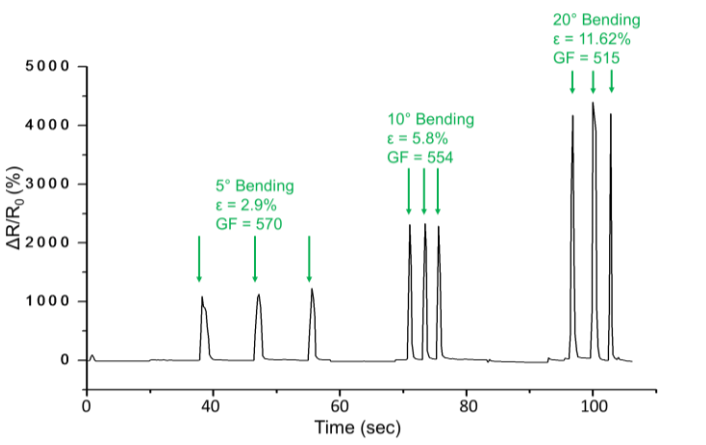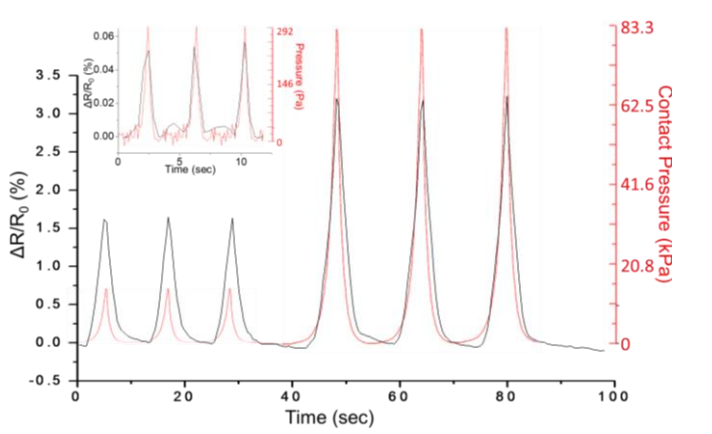Australian Researchers 3D Printing Tactile Sensors with TPU and PLA Composites
In the recently published ‘An Ultrasensitive 3D Printed Tactile Sensor for Soft Robotics,’ Australian researchers Saeb Mousavi, David Howard, Chun Wang, and Shuying Wu create a new method for production of piezo-resistive tactile sensors for soft robotics, using FDM 3D printing with thermoplastic polyurethane (TPU) and a polylactic acid-graphene (PLA-G) composite.
Fabrication of tactile sensors via 3D printing are receiving increasingly more attention due to the benefits offered—from greater affordability overall to increased speed in production, and the ability to use multiple materials, including graphene. Due to ‘superior surface area’ and high conductivity, graphene shows great promise as a material for tactile sensing. Thermoplastics are accessible and affordable, and easy to print. No post-processing is required, and stronger bonding occurs for embedded networks due to greater hardness in the graphite.
For this study, the researchers used polylactic acidgraphene (PLA-G) conductive polymer composite (CPC) as a piezoresistive sensing material for 3D printing tactile sensors. They 3D printed a stretchable sensor, testing performance by assessing the bending angle and wide pressure range. While the sample the researchers created for this study was basic, it shows promise for the ability to 3D print and use more complex geometries later as the material is sensitive to the differences in pressure and bending.
“The ability to integrate structural and sensing materials into one printed part gives several advantages and bypasses some of the limitations of conventional fabrication methods,” state the researchers. “This sensor can easily be integrated or attached to soft robotic actuators for acquiring tactile information.”
Because PLA is not flexible, they created the PLA-G composite to work as a layer sandwiched between the TPU (here, the research team used Ninjaflex), with no ‘debonding’ noted.

3D printed sensor. PLA-G is sandwiched between two layers of TPU. At the two ends, PLA-G is designed to be exposed to facilitate wire bonding.
“The sensor was glued at two ends on an aluminum hinge to test its sensitivity to confined bending. During each experiment, the hinge was bended to a certain degree and returned to its original state rapidly,” explained the researchers. “By measuring the initial gauge length and the radius of curvature, the corresponding strain (ε) induced in the sensor for each bending angle was calculated (ε = ΔL/L0), and the gauge factor (GF) was calculated subsequently (GF = (ΔR/R0)/ε).”

Bending angle detection results. The sensor was fixed at two ends on a hinge. The gauge factor (GF) was calculated by calculating the induced strain in each bending cycle.
The researchers used a load cell to apply contact pressure on the sensor as they evaluated its ability to detect pressure. Three different applied pressures were used during the experiments.

Contact pressure detection results. The inset shows the result for the smallest detectable pressure (292 Pa).
“The thermoplastic filaments facilitate the process, because no curing or post-processing is required. Furthermore, this sensor can be printed or attached on any surface (e.g. on soft actuators) and can give accurate and reliable tactile feedback. The ability to sense contact pressure and bending angle is crucial for a soft actuator and this sensor proved to be a very good candidate to develop such robotic actuators in future,” concluded the researchers.
Soft robotics continue to progress for a wide range of industrial applications, accompanied by 3D printing, whether creating new frameworks, metamaterials to work with robotics, or 4D concepts.
What do you think of this news? Let us know your thoughts! Join the discussion of this and other 3D printing topics at 3DPrintBoard.com.
[Source / Images: ‘An Ultrasensitive 3D Printed Tactile Sensor for Soft Robotics’]Subscribe to Our Email Newsletter
Stay up-to-date on all the latest news from the 3D printing industry and receive information and offers from third party vendors.
You May Also Like
Axtra3D Revolutionizes AM with “No Tradeoffs” Photopolymerization Solutions and Technologies
Axtra3D, an emerging leader, is transforming the photopolymerization AM industry with its Lumia X1 3D printer. What sets Axtra3D apart is not only its cutting-edge technology but also its executive...
Beyond Chuck Hull’s Legacy: the Unsung Heroes Who Paved the Way for 3D Printing
Next month, we will celebrate a huge anniversary. 40 years ago, on August 8, 1984, Charles Hull filed a patent application for stereolithography: the first additive manufacturing technique in history,...
3D Printing Webinar and Event Roundup: July 14, 2024
We’ve got a busy week of 3D printing webinars and events, both virtual and in-person! Stratasys continues its training and tour, while a Laser Additive Manufacturing workshop will be held...
3D Printing Markets Grows 8% Year over Year
Despite a market slowdown in 2023, the additive manufacturing (AM) sector continues to grow at a robust rate, according to AM Research. The market analysis firm published its Q1 2024...
































